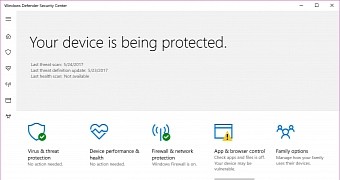Fuzzing Linux Drivers
Interface Aware Fuzzing for Kernel Drivers. DIFUZE is an interface-aware fuzzing tool to automatically. (which is a close fork of Linux) are in driver code. DIFUZE is an interface-aware fuzzing tool to automatically generate valid inputs and trigger the execution of the kernel drivers. We leverage static analysis to.

ABSTRACT Device drivers are an essential part in modern Unix-like systems to handle operations on physical devices, from hard disks and printers to digital cameras and Bluetooth speakers. The surge of new hardware, particularly on mobile devices, introduces an explosive growth of device drivers in system kernels. Many such drivers are provided by third-party developers, which are susceptible to security vulnerabilities and lack proper vetting. Unfortunately, the complex input data structures for device drivers render traditional analysis tools, such as fuzz testing, less effective, and so far, research on kernel driver security is comparatively sparse.
Difuze is an interface-aware fuzzing tool to automatically generate valid inputs and trigger the execution of the kernel drivers. We leverage static analysis to compose correctly-structured input in the userspace to explore kernel drivers. DIFUZE is fully automatic, ranging from identifying driver handlers, to mapping to device file names, to constructing complex argument instances. We evaluate our approach on seven modern. The results showthat DIFUZE can effectively identify kernel driver bugs, and reports 32 previously unknown vulnerabilities, including flaws that lead to arbitrary code execution. DIFUZE CONCEPTS:. Security and privacy →; Vulnerability scanners; Dependencies: + LLVM + Python2 + libxml2-dev Usage.

Sudo apt-get install libxml2-dev git clone && cd difuze cd helperscripts python setupdifuze.py -o difuzedeps cd. Cd InterfaceHandlers./build.sh Building Kernel: make V=1 O=out ARCH=arm64 makeout.txt 2&1 Running Interface Recovery analysis helperscripts/runall.py -help python runall.py -l /mediatekkernel/llvmbitcodeout -a 1 -m /mediatekkernel/kernel-3.18/makeout.txt -g aarch64-linux-android-gcc -n 2 -o /mediatekkernel/kernel-3.18/out -k /mediatekkernel/kernel-3.18 -f /mediatekkernel/ioctlfinderout.
README.md TriforceLinuxSyscallFuzzer. Symbolic math in matlab. 20160613. Jesse Hertz.
Tim Newsham New: For those looking to play with TriforceAFL and TLSF, Richard Johnson created a Dockerfile which installs both (and even builds a Linux kernel for you). It's available here.
Fuzzing Tutorial
This is a collection of files used to perform system call fuzzing of Linux x8664 kernels using AFL and QEMU. To use it you will need TriforceAFL from and a kernel image to fuzz. Scripts assume that TriforceAFL is found in $TAFL or./TriforceAFL/ (N.B.
Building testAfl requires that./TriforceAFL/config.h exist). Building To build: make Fuzzing To run, first install a kernel into./kern/bzImage and extract /proc/kallsyms into./kern/kallsyms. Set K=kern environment variable to point to your kernel. Now run: make inputs./runFuzz -M M0 Note that the runFuzz script expects a master or slave name, as it always runs in master/slave mode.
See the runFuzz script for more usage information. Also Note that this only creates a small set of example inputs. To test a large number of important system calls, you will probably want to generate one example of each system call, or at least one example for every 'shape' of system call. These should be placed in inputs/. See gen2.py for an example. Reproducing To reproduce test cases (such as crashes) run:./runTest inputs/ex1./runTest outputs/crashes/id. You can also run the driver out of the emulated environment with the -t option, with verbose logging with -vv and without actually performing the system calls with -x:./driver -tvvx.